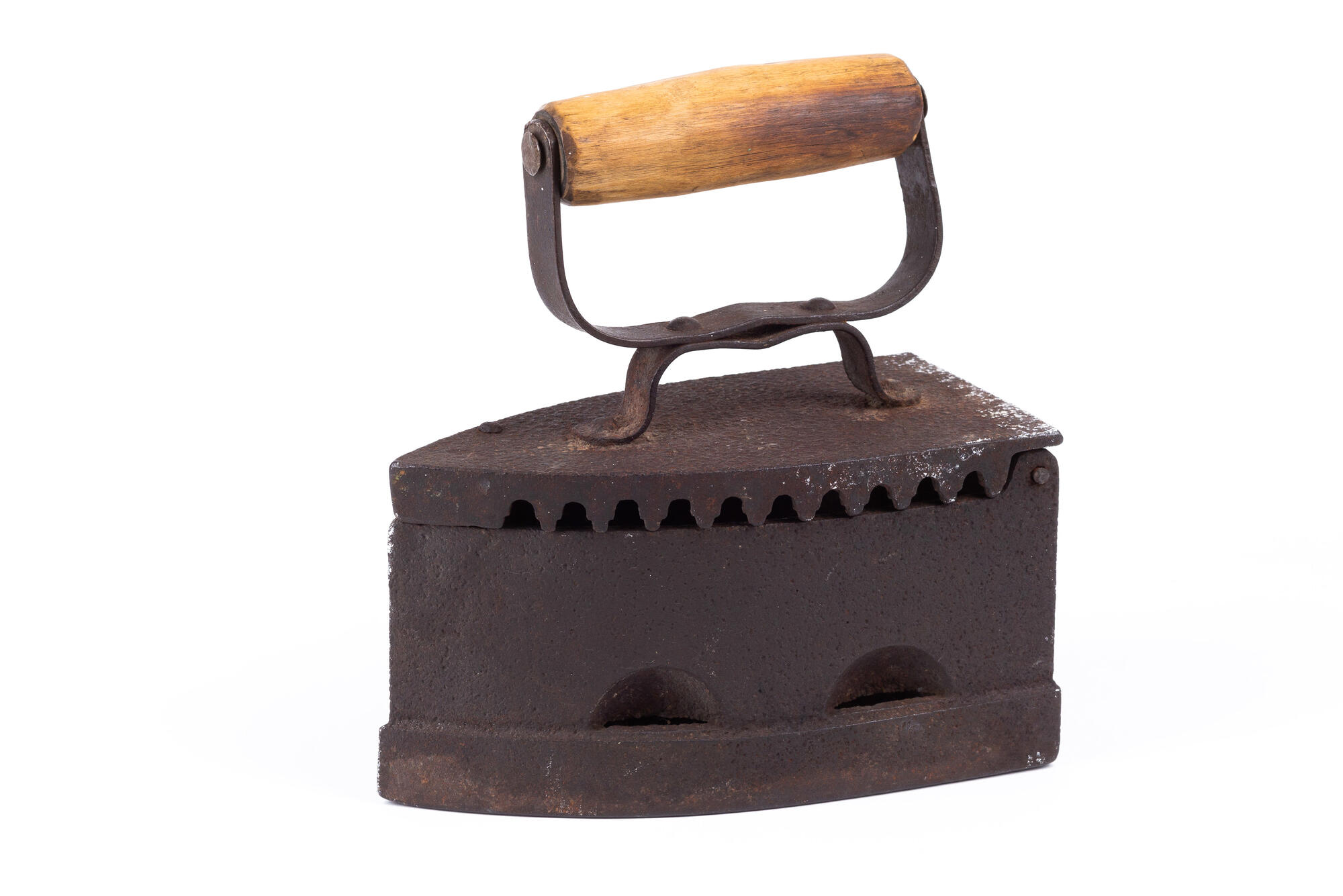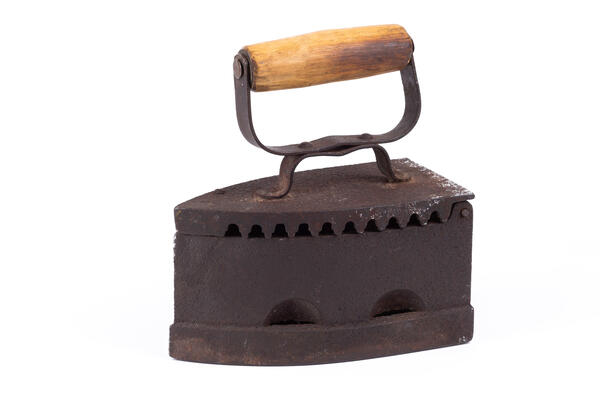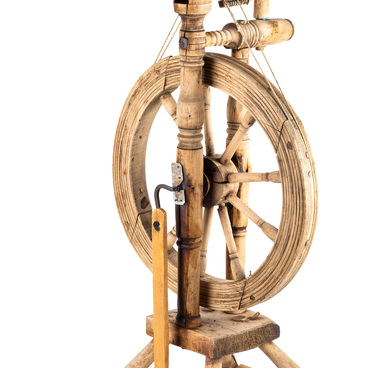Iron is a household appliance to iron out wrinkles and creases on clothing. The process of smoothing out clothes is called ironing. Historians believe that the prototypes of the iron first appeared in the ancient past. Even by the 4th century B.C., in Ancient Greece, methods of pleating clothes from cloth sections were invented: with the help of a hot metal rod, resembling a rolling pin, clothes were given stable, pressed folds. Slightly worked, heated cobblestones could have been used to smooth clothes at that time.
One of the first written mentions of the iron is contained in the encyclopedic dictionary of the Turkic language Dīwān Lughāt al-Turk, written by the philosopher and lexicographer Mahmud al-Kashgari in the 11th century. In this source, the iron was described as follows: it is ‘an iron in the form of a spatula, which is heated and used to warm the pile of clothing and smooth it’. In the XVIII–XIX centuries, metal irons became widespread, and their shape was very similar to modern-day ones.
Old metal irons were heated with gas, or in a stove. Coals were placed inside the body, and then closed with a lid, and a pipe was attached on top for better traction. For the coals to warm the clothes better, special holes were made on the sides. By moving this kind of an iron back and forth, it was possible to increase the air circulation and ignite the coals. These irons were not very convenient or safe: sparks and small embers constantly flew out of its internal compartment in the body (the brazier), leaving scorch marks and holes on the clothes.
Since those old metal irons were heavy, ironing became a real exercise in physical strength. Irons have been known in Russia since the 17th century, and they probably appeared even earlier in Europe. The first written evidence of the presence of irons in domestic use is dated February 10, 1636. In the book detailing the expenses for the Russian Imperial Court, it reads: ‘Blacksmith Ivashka Trofimov was given 5 altyns, and for that money he made a metal iron for the Tsar’s chamber’. Even by the 18th century, industrial production of the so-called box irons had already been established — these were heated with the help of coals that could be fanned through special holes. These irons were produced at the Demidov foundry and some others.
One of the first written mentions of the iron is contained in the encyclopedic dictionary of the Turkic language Dīwān Lughāt al-Turk, written by the philosopher and lexicographer Mahmud al-Kashgari in the 11th century. In this source, the iron was described as follows: it is ‘an iron in the form of a spatula, which is heated and used to warm the pile of clothing and smooth it’. In the XVIII–XIX centuries, metal irons became widespread, and their shape was very similar to modern-day ones.
Old metal irons were heated with gas, or in a stove. Coals were placed inside the body, and then closed with a lid, and a pipe was attached on top for better traction. For the coals to warm the clothes better, special holes were made on the sides. By moving this kind of an iron back and forth, it was possible to increase the air circulation and ignite the coals. These irons were not very convenient or safe: sparks and small embers constantly flew out of its internal compartment in the body (the brazier), leaving scorch marks and holes on the clothes.
Since those old metal irons were heavy, ironing became a real exercise in physical strength. Irons have been known in Russia since the 17th century, and they probably appeared even earlier in Europe. The first written evidence of the presence of irons in domestic use is dated February 10, 1636. In the book detailing the expenses for the Russian Imperial Court, it reads: ‘Blacksmith Ivashka Trofimov was given 5 altyns, and for that money he made a metal iron for the Tsar’s chamber’. Even by the 18th century, industrial production of the so-called box irons had already been established — these were heated with the help of coals that could be fanned through special holes. These irons were produced at the Demidov foundry and some others.



